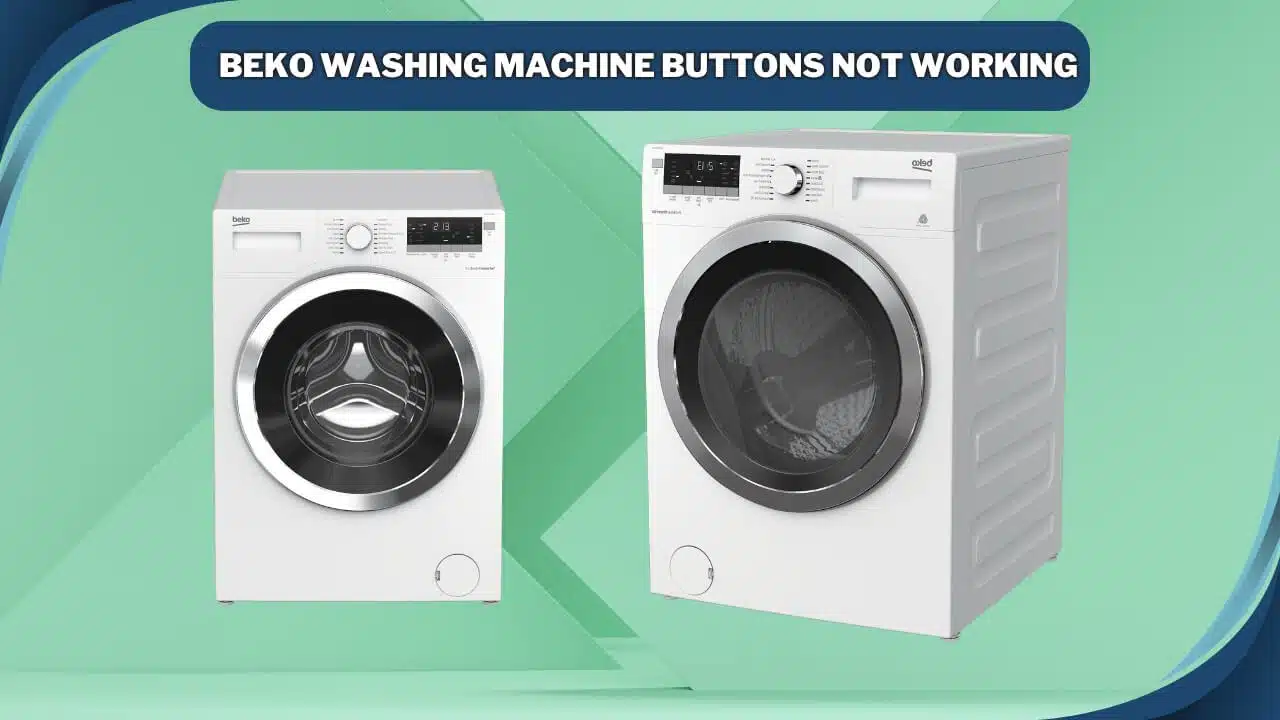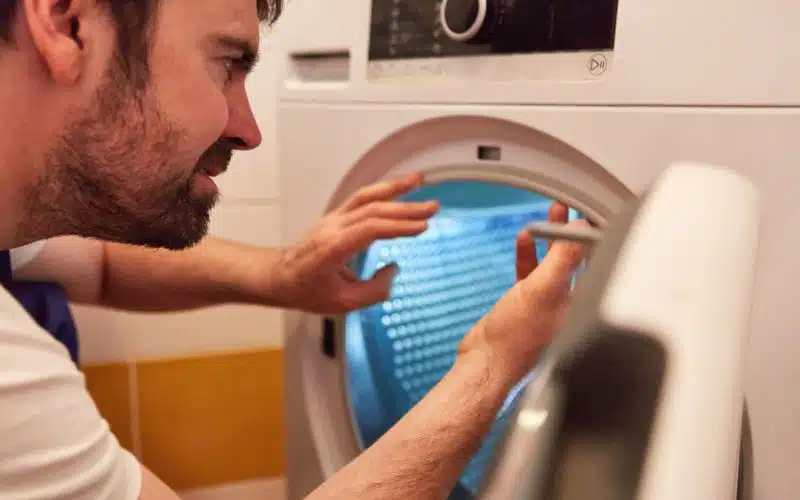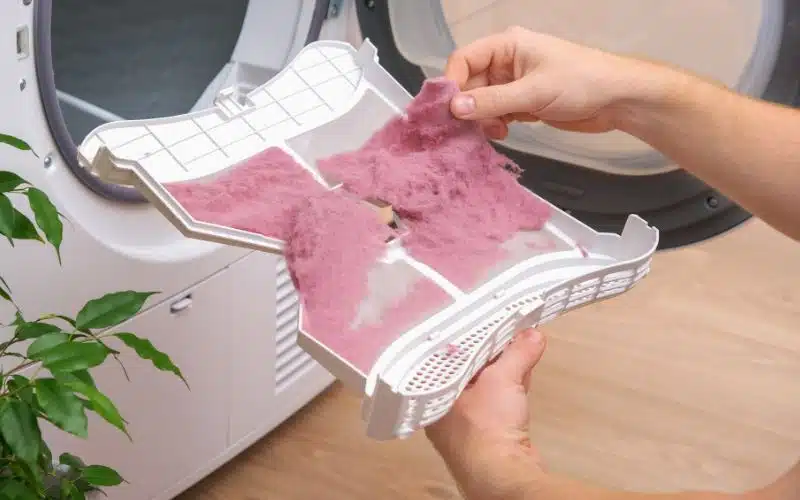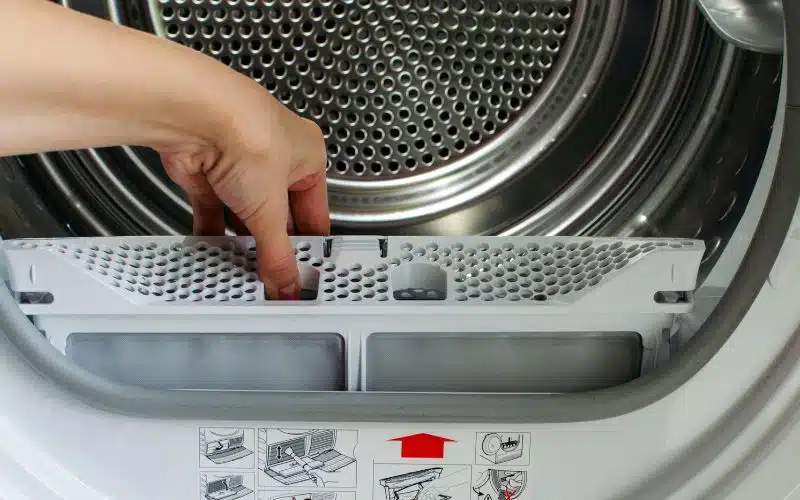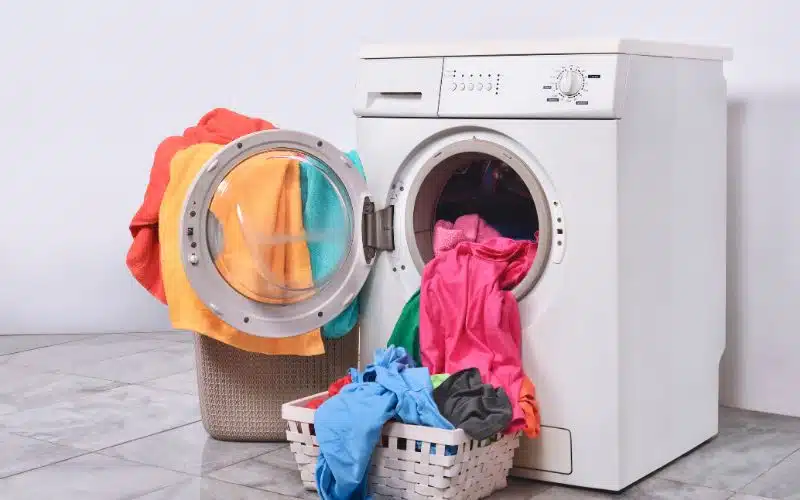These days, having a moisture sensor in our dryers helps us a lot as it is used instead of a timed dry setting.
The moisture dryer checks and takes note of the moisture in the cloth to find out if it is dry enough or not, and this saves us a lot of time and energy.
Therefore, knowing how to troubleshoot the moisture sensor in your LG Dryer can come in handy.
To troubleshoot your LG dryer moisture sensor, place dry clothes in the dryer and run it for a few minutes. If the dryer stops, then the sensor is working. If otherwise, then there might be a fault. Alternatively, you can place damp clothes. It’ll run and stop only when the clothes are dried.
LG Dryer Moisture Sensor Not Working?
There are different ways to detect if your LG dryer’s motion sensor is not working.
The most common of them all is when you put your cloth into the dryer, and it does not get dried, or the dryer keeps working and does not stop without it drying the clothes.
These are just the general ways of testing if your moisture sensor works.
To further test the motion sensor dryer to be sure if it’s not working, the dryer might give the appropriate sound and not do what it is supposed to do.
So you can carry out a test on it by placing dry clothes in the dryer with the moisture sensor settings.
The moisture sensor is supposed to detect that the clothes are dry and, after running for a few minutes, stops, if it does otherwise, then your dryer moisture sensor isn’t working.
Additionally, you can carry out another test on the dryer to further test if it is working or not.
The test is done on damp clothes by placing the dampened clothes into the dryer with the moisture settings turned on.
If the dryer moisture sensor is working, the dryer should run for more than a few minutes without going off.
If it goes off after a few minutes without drying the cloth, we can say that the sensor is faulty.
After performing the test on the completely dry clothes and the damp ones, we can tell if our dryer moisture sensor is working or not.
Also, note that if your dryer doesn’t pass one or both of the tests, then it is faulty.
How Do I Know If My LG Dryer Sensor Is Bad?
There are various ways to know if your LG Dryer Sensor is not good. When a dryer is bad, different symptoms can be seen dryer as;
- The dryer timer reduces without drying the clothes.
- The clothes are dry, and the dryer keeps working.
- The dryer is stuck on sensing
- The dryer keeps going off after a few minutes.
These symptoms can result from faults in the dryer, as shown below.
#1. Dryer Timing Reduces And Not Drying The Clothes
When the dryer moisture sensor does not dry the cloth, and the timer reduces to such a time not capable of drying the clothes, it is a clear case of the sensor being bad.
The dryer senses that the clothes are wet, but not about how wet the cloth reduces the dry time.
It implies that the motion sensor might not be wrong; it is not working accurately.
As has been established, the moisture sensor is not bad; you troubleshoot it to know what the problem is. It can be done by:
- Checking to see if the moisture sensor is dirty
- Check if the moisture sensor connection is loose, which makes the timer countdown without actually drying the clothes.
You should clean the dirty moisture sensor with alcohol or a little soap to get rid of the dirt inside.
Then, you can rectify the loose connection by removing the sensor to check the links and fix its error.
Once that is done, the moisture sensor should be alright, and if not, it simply means that the moisture sensor needs to be replaced.
#2. The Clothes Are Dry But The Dryer Keeps Working
This happens when you put dry clothes in the dryer, but the dryer keeps working instead of stopping.
It is a clear case of the dryer sensor being wrong, and this scenario can happen if;
- Short circuit moisture sensor bar
- Moisture Sensor Bar Wax Build-Up
#1. Short Circuit Moisture Sensor Bar
The job of the moisture sensor in the moisture sensor dryer is to determine the moisture in the cloth and then create electrical resistance.
In the case of dry clothes in the dryer, there is no moisture, so the dryer is supposed to stop working.
If it does not stop working, we can say something is causing the electrical resistance in the dryer.
Therefore, no amount of dry cloth we put in the dryer, the moisture sensor will still detect moisture in it and keep on working without stopping.
Changing the moisture sensor is needed for the dryer moisture sensor to work well.
#2. Moisture Sensor Bar Wax Build-Up
You can fill the dryer moisture sensor with a fabric softener, which builds up like wax around the moisture sensor bar, and this does not allow the sensor to sense moisture.
Once this happens, the dryer keeps working even when the clothes are dry without stopping.
The good thing about this is that you can easily rectify it by cleaning off the waxy substances across the sensor.
The cleaning is done by adding water or alcohol to a cloth to wipe the sensor’s surface.
#3. Dryer Going Off After A Few Minutes
Sometimes, we find out that our dryer goes off without completing a cycle while the dryer is full of wet clothes.
It can also result from the moisture sensor dryer being bad though this is not the case every time.
If your dryer trips off after a few minutes before concluding that it’s a moisture sensor problem, you have to check;
- That the vent in the dryer isn’t blocked.
- That the door to the dryer isn’t faulty.
Once you’ve done these checks, you can conclude that it’s a moisture sensor problem.
This kind of problem in the dryer occurs because the sensor isn’t detecting any moisture, so it trips off instead of wasting power.
It might be due to the sensor being faulty, or it’s so dirty that it can’t sense any moisture in the clothes.
#4. Dryer Keeps Sensing
Often, we notice that the dryer is stuck on sensing and the clothes in the dryer are still wet. This kind of problem results from something wrong with the moisture sensor dryer.
It might be a circuit board-related issue, or the sensor is dirty and unable to sense correctly. You can rectify this issue by cleaning the sensor or with the aid of a technician.
Where Is The Moisture Sensor On A LG Dryer?
In the LG Dryer, the moisture sensor can be located on the front of the dryer just at the back of the lint trap.
The position of the moisture sensor placed in front of the dryer is for the newer dryers, unlike the older dryers whose sensors can be found at the back of the dryer.
How To Test Moisture Sensor On An LG Dryer?
An LG dryer moisture sensor test is carried out by placing dry clothes in the dryer and running for a few minutes.
If the dryer runs and stops, you know that the moisture sensor is working because it stopped after not finding moisture in the clothes, but the moisture sensor isn’t working if it keeps running.
Also, you can test the moisture sensor by placing damp clothes in the dryer and running it for a while.
If the dryer works and stops only after the clothes are dry, then the moisture sensor is working, but if the dryer stops working and the cloth is still moist, then the moisture sensor is no longer working correctly.
However, if your dryer passes one of these tests and not the other, then the moisture sensor isn’t working correctly.
The dryer must pass the two tests before concluding that the sensor is working correctly.
If the moisture sensor is faulty, it might need to be replaced or contact a technician to help with it.
How To Replace a Moisture Sensor On an LG Dryer?
To replace the moisture sensor in your dryer, these steps need to be followed;
- Unplug the power cord to ensure safety.
- To make replacing the moisture sensor easier, remove the front bulkhead.
- Unscrew the screws holding the front bulkhead with the appropriate screwdriver and remove the bulkhead.
- Remove the screws holding the control panel.
- Lift the control panel from the support bracket and place it away.
- Then unscrew the support bracket itself to lift the frame.
- Remove the door switch wire harness and set the bracket aside.
- Depress the tabs on the sensors and remove the sensor.
- Get your new sensors ready to be placed in the stead of the old ones.
- Place the end of the new sensors into the bracket and snap it into position.
- Plug the bracket back into the dryer.
- Screw back the bracket to secure it.
- Reposition the control panel and put it in its place.
- Replace the front bulkhead and screw it.
- Plug back the power cord into the mains and confirm if the dryer is working correctly.
Conclusion
You must know basic things about your home appliances, such as troubleshooting your dryer moisture sensor.
Knowing such things saves a lot of time, stress, and energy that you can better utilize in doing other things.
For example, there are ways to check why your motion sensor dryer isn’t working and what you can do to correct the error, fix it yourself or call a technician.
